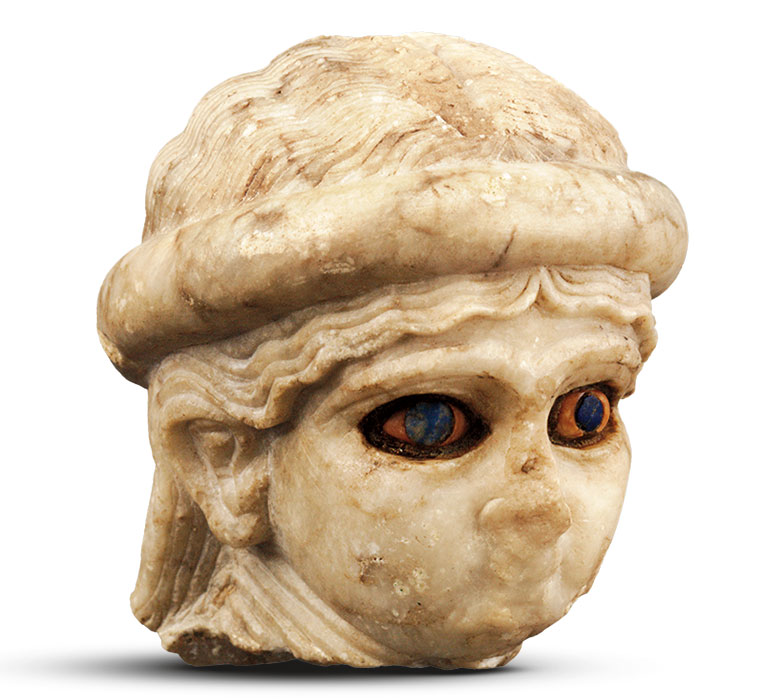
Found alongside other sculpture fragments in the sacred precinct at Ur, this female head retains its deeply cut, piercing eyes, outlined with bitumen and inlaid with light-colored shell and blue lapis lazuli imported from Afghanistan. Her striking gaze is complemented by her symmetrical, arching eyebrows, which are connected to her partially preserved nose. A few of the finely rendered strands of her choker are still visible. Her wavy hair is held in place by a circlet reminiscent of Enheduanna’s headdress. There is no inscription to confirm the figure’s identity, but the stylistic and iconographic features suggest that the statue represents a high priestess.
Head of a high priestess (?) with inlaid eyes
Mesopotamia, Akkadian, Ur (modern Tell el-Muqayyar), area EH, south of gipar
Akkadian period (ca. 2334–2154 BC)
Alabaster, shell, lapis lazuli, and bitumen
University of Pennsylvania Museum of Archaeology and Anthropology, Philadelphia, USA, Excavated 1926; B16228
Courtesy of the Penn Museum
Sidney Babcock: It is extremely rare that an ancient statue retains its original inlays. Such remarkable cases allow us to have a better understanding of the visual impact of artworks on ancient viewers. This statue confirms what an awe-inspiring sight it would have been: Its deeply cut, piercing eyes were outlined with bitumen and inlaid with light-colored shell and blue lapis lazuli imported from Afghanistan. Her striking gaze is complemented by her symmetrical, arching eyebrows, which are connected to her partially preserved nose. A few of the finely rendered strands of her choker are still visible.
This head was found alongside other sculpture fragments in the sacred precinct at Ur, but none of those fragments belonged to the body to which it was once attached. Without an accompanying inscription, it is impossible to identify her with certainty but her long, flowing hair held in place by a circlet suggests that she was a high priestess. We have seen a similarly shaped headdress on Enheduanna herself.
